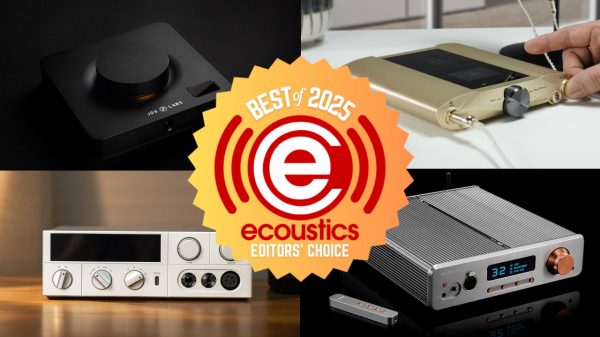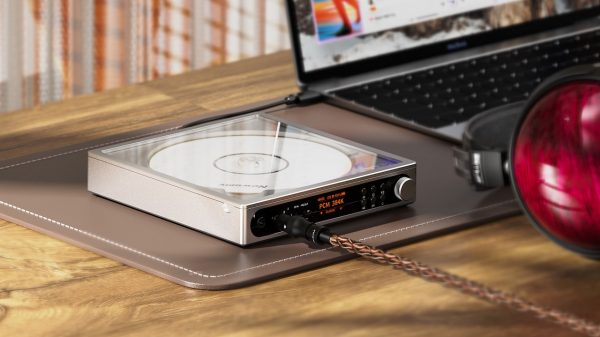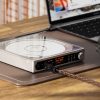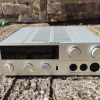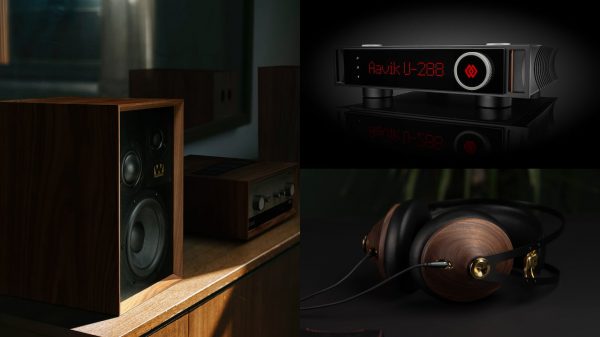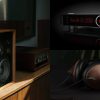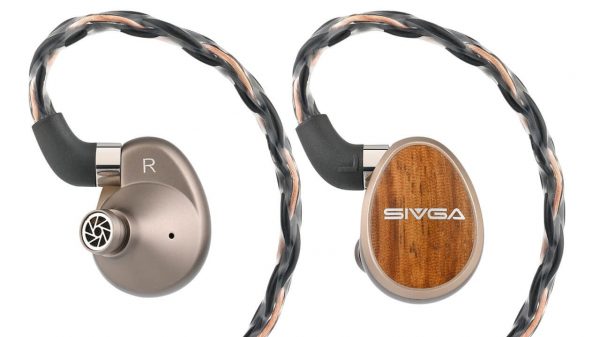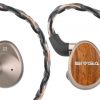When FiiO reached out in October with an offer to review the brand new M11S DAP and FH7S IEMs, I did the unthinkable and actually hesitated with my response. FiiO were one of the first Chinese high-end audio brands to really make a splash outside of the domestic market and I’ve been a huge fan ever since — until recently when I felt that the brand had started to abandon what made its offerings so appealing from the very beginning; a strong focus on affordable products that really delivered excellent sound quality.
The original FiiO X1 Music Player was the biggest foreign challenger to the Apple iPod; sales of the unit surpassed both the Creative Zen and Microsoft Zune and outlasted almost every other iPod clone.
The success of the X1 prompted FiiO to develop its own lineup of earphones to match their DAPs; the earliest models were created in partnership with Dunu before the company decided to make everything in-house.
While the DAP lineup has shrunk considerably, the IEM collection now includes the FD series (single dynamic drivers), FA series (balanced armature drivers), and the FH series (hybrids); the prices range from around $100 to $700 USD/pair depending on the construction and driver configuration.

The FiiO M11S proved to be a very strong performer at $500 and convinced me that the company is going back to its roots with high-performance DAPs that are more affordable; the FH7S IEMs retail for $400 and the entire package at $900 offers a lot of performance for the money. $900 for a DAP and pair of IEMs is clearly not a “budget” purchase but FiiO have created a high value combination for music listeners that prioritize personal audio over the loudspeaker experience.

So What’s In the Box?
FiiO have a reputation for going overboard with their IEMs and the FH7S do not disappoint in that regard; the package includes the ear pieces and cable, a hard case, cleaning tool, cable removal tool, a 3.5mm and 4.4mm jack for the modular cable, 19 sets of tips, magnetic cable tie, metal plate to hold the two sets of filters not in use, and three sets of filters.
There are seven different styles of tips with two pairs of foams, two pairs of double flanged, and five different types of silicone tips (SML each).
The case has a leather-like outer surface and a cloth lined interior with dividers to keep the ear pieces from getting scratched in transit or storage. The supplied kit is as good as I’ve seen at this price and includes accessories that other manufacturers will charge you extra for.

The Build
The ear pieces are constructed from a CNC machined aluminum alloy with what FiiO describes as a “sci-fi armor face” with three slots that operate as vents and give the FH7S a semi-open design.
The ear pieces have an anodized matte black finish with bright stainless accents to complete the battle ready look. The proportions are reversed compared to most standard IEMs: the majority of the shell is the exterior portion.
There is a single vent on the inner shell over the dynamic driver just behind the L/R labels. The nozzles are stainless steel and threaded for one of the three provided filters which are also stainless steel designs with knurled edges for ease of grasp and tip retention. MMCX connectors are used and were extremely tight fitting on my sample.
My initial impression was that the FH7S were on the larger side, but the shape actually makes them quite comfortable in the ear and mild forward rake of the nozzles creates a moderate seating depth in the ear canal.
After working through several sets of tips, I settled on the clear mid-sized tips with the orange core for most of my listening.
Don’t expect a lot of passive isolation from these IEMs; the open back nature of the design creates a scenario where there is leakage in both directions.
The cable is the same modular cable I reviewed with the FH7S; the design utilizes plug-in jack modules with 4.4mm and 3.5mm sizes provided — a 2.5mm version is available at an additional cost.
Once the module is plugged in, the outer metal shell screws on to lock the module in place. The jacks are keyed so they cannot be installed incorrectly, and the system is both easy to use and very well executed.
The cable itself is an 8-wire braid from the jack up to the splitter. There is a chin slider above the splitter and all of the hardware (jack, splitter, slider) has a matching gun-metal gray finish that nicely complements the dark copper of the cable itself.
Above the splitter, the wires are 4-wire braids up to pre-formed hooks and MMCX connectors in clear housings. The connectors have a red or blue band at the base to help with indexing.

Driver Technology
The FH7S utilize 4 Knowles Balanced Armatures and a 13.6mm dynamic driver; the dynamic driver was designed and built in-house at FiiO and uses a DLC diaphragm with a new patented S. Turbo acoustic chamber to further enhance the low end performance.
The driver first showed up in the FH9 but the S. Turbo acoustic chamber design is new for the FH7S. The midrange is handled by a custom built pair of DFK armatures that were co-designed by Knowles and FiiO specifically for the FH7S.
The top end (treble) is handled by a pair of SWFK-31736 drivers in the nozzle. Both drivers exit through a single port so there is only one exit port visible in the nose despite the dual drivers behind it.
The nominal impedance is 18 ohms with a sensitivity of 104dB/mW which makes it a good match for sources like FiiO’s M11S or competitors like the Hiby R5 or Cayin N3 Pro. I also found it worked equally well with the Questyle M12 and M15 as well as the iFi GO Bar Dongle DAC.

Sound
It is often the case with budget IEMs, that filters emphasize too much of one region and not enough of the other. Because of that reality, we spend a lot of time trying to establish a baseline for these types of IEMs, so that when we discuss the sonic performance with the filters engaged, you have a better understanding of how they are impacting the sound.
The sub-bass is mildly elevated regardless of which filter is selected, but does retain good clarity and speed overall. Bass notes are certainly distinct with above average detail and texture until they start to roll-off around 20Hz; the impact can still be felt but they lose a lot of their definition.
Mid-bass information is strong and also slightly elevated and it would be accurate to state that the tuning adds some warmth in this region all the way up into the upper bass range. The overall level of clarity is very high, and the timbre is more natural sounding than a number of other IEMs in the same price range.
The lower midrange has very high levels of clarity and detail; male vocals are impressively rendered with high levels of resolution, weight, and very accurate sounding timbre. Guitar notes are equally impressive with a strong edge and excellent sustain.
The midrange overall has excellent presence and I was rather surprised by how well the FH7S reproduce the violin and piano; notes have weight, detail, and a very natural sounding presentation on rock, classical, and jazz tracks.
The upper midrange and lower treble range exhibit some additional emphasis around 2kHz which is another defining element of the overall tonal balance and presentation. Female vocals are pushed forward in the mix ahead of the instrumentation and I found them more pronounced than their male counterparts.
The lower treble push is fairly pronounced but does a good job of balancing the low end emphasis and unless tracks are mastered on the hot side, the treble drops back quickly enough that it doesn’t become strident or sibilant.
Snare rattle is crisp and cymbals are slightly less energetic or accurate than I was hoping for, but still superior to many of the similar IEMs in the $400 range. The treble begins to roll-off around 14kHz which manages to give the FH7S some energy and airiness in the top end without becoming fatiguing at moderate volume levels.
The soundstage is what one should reasonably expect from IEMs; the width and depth are average creating a somewhat intimate sounding presentation, but the stereo separation is quite impressive. Imaging is quite accurate and it was easy to place performers and instruments within the soundstage. The FH7S are certainly above average in that department.

Filtering the Sound?
The result is a fairly well balanced, slightly warm tone with good clarity, transparency, and a smooth overall presentation.
Swapping from the white balanced filter to the red bass filter brings the bass forward by reducing the upper midrange/lower treble push. Most of the filter impact is between 1kHz-5kHz with very little impact to the signature above and below that range.
The result is a signature that sounds a bit more impactful than the baseline with less energy in the strings and female vocals. I found this filter particularly well suited to hip-hop and rock and less well suited to classical and choral pieces than the default setting.
Swapping to the green filter, impacts the upper midrange and lower treble but with the opposite effect. Here the lows are slightly over-shadowed by the upper midrange and female vocals are pushed forward making this a great choice for acapella and choral works but less well suited to more balanced compositions.

Conclusion
FiiO have ended 2022 on a serious high because of the M11S DAP and FH7S IEMs; both products offer a very high level of performance at their respective price points but also as a tandem.
The warm tonal balance of the FH7S makes it a good match to a wide range of DAPs and Dongle DACs with a more neutral sounding presentation including models from Sony and Astell&Kern.
The supplied kit is an excellent value for the money and while not everyone will love the modern looking industrial design of the ear pieces — those same listeners will find it very hard to ignore the sonic performance that places it near the top of the IEM category between $400 and $500 USD. FiiO have clearly put a lot of effort into creating a universal pair of IEMs that really deliver. You would well advised to find a pair to audition.
Where to buy: $399 at Amazon












